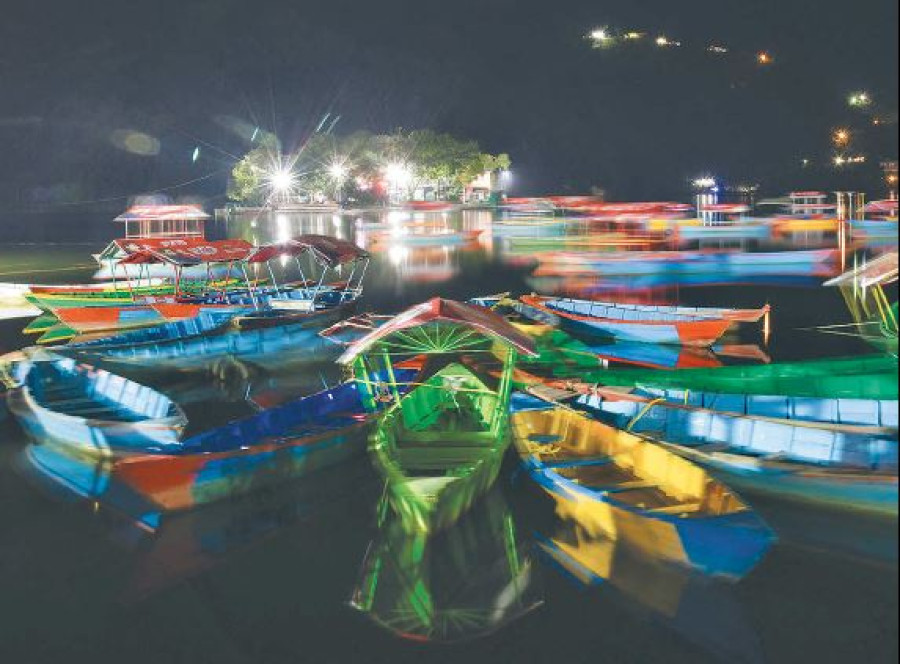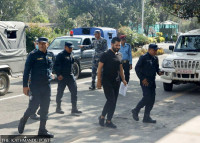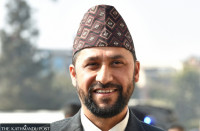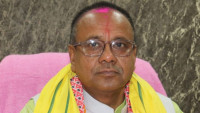National
Domestic tourism in the festive season provides some succour for the industry
With no foreign tourists, only 25 percent of restaurants in Pokhara are operating while in Chitwan, footfalls are only a third compared to previous years, service providers say.
Sangam Prasain
Hari Kharel, a businessman from Jhapa, decided to go on a tour immediately after the Dashain festival—eight months after the Covid-19 pandemic forced the world to remain indoors.
He quickly picked a nearby destination—Shree Antu, a popular tourist attraction in the eastern hilly region of Ilam famous for the sunrise view and for the tea gardens. His four-member family spent a night at a local homestay. It cost him Rs9,000.
“I thought going to Shree Antu would be worth the money,” he said.
Even as the fears of a second or third wave of the pandemic linger, tens of thousands of Nepalis have started travelling to their favourite holiday spots.
“There is still fear to travel but it depends on how you travel. We cannot remain indoors all the time—months and a year on end,” said Kharel. “Obviously, there are certain safety protocols that you have to follow.”
But early on Saturday morning, Kharel was surprised to see around 3,000 other tourists gathering to observe the sunrise at the view tower atop the Antu hill. “There was a massive crowd. For a minute, I thought everything was normal,” he said.
The hill station is situated at an altitude of 2,328 metres from sea level.
Another occasional traveller, Rasmita Gurung, decided to leave Kathmandu to spend some quality time with her friends after Dashain.
She along with two other friends chose Dhampus, 25 kilometres northwest of Pokhara and gateway to one of the world’s most popular trekking trails in the Annapurna region, for their excursion.
She spent a night in Pokhara on Thursday. “Dashain is over,” said Gurung, who was planning to go boating on Phewa Lake on Friday. “We cannot live indoors all the time. That’s why we made the plan for this trip.”
But she was surprised to see others at Lakeside tourist district in Pokhara. “I thought we would be the only visitors,” she said.
With Nepal closed to foreign tourists and domestic pandemic restrictions eased, tens of thousands of people have started to travel, giving the country's tourism industry a much-needed boost.
Air travel within Nepal is gradually picking up for the first time since the coronavirus outbreak. Hotels, resorts and homestays too have slowly started welcoming guests.
Sudarshan Bartaula, the spokesperson for Yeti Airlines, said they have sold over 220 tour packages for before and after Dashain. “This is encouraging sales. This shows people are desperate to travel,” he told the Post.
The airline has, for the first time, launched a special package for various tourism destinations in order to revive the country’s tourism industry and also remain afloat in a sector heavily hit by the pandemic.
On September 17, the government allowed domestic airlines to resume flights with 50 percent occupancy after six months of suspension. Airline operators protested the government’s decision saying it would not be economically feasible following which they were allowed to carry the full load of passengers from September 21 onward.
For international travellers, only trekkers and mountaineers, who come to Nepal with fixed bookings and other documents, have been allowed to enter the country from October 17 and so far 11 foreign mountaineers have got the permission to climb Nepal’s mountains this season. For the rest of the foreign tourists, the Himalaya nation still remains closed.
The months of September to November is Nepal’s peak tourist season for both domestic and international travellers as they visit nooks and crannies of the country giving the rural economy a much-needed boost. Nearly, one-third of the 1.2 million foreign visitors come to Nepal during the autumn season.
Nepal Tourism Board, the country’s tourism promotional body, estimates around 5 million domestic tourists go around their country annually. Most of the domestic travel happens during the autumn during the Dashain and Tihar festival holidays.
But this year, the coronavirus played spoilsport. The much-hyped Visit Nepal Year 2020, that aimed to host 2 million foreign visitors, was a no show.
Given the scenario, domestic tourists have become a saviour to an extent for the beleaguered industry.
“Our bookings indicate most are travelling to the Everest and Annapurna regions,” said Bartaula.
The relatively affordable packages—Rs14,000 for 4 nights and five days Kathmandu-Namche Bazaar package and Rs17,000 for 4 nights and 5 days package for Kathmandu-Pokhara-Ghandruk are the big draws, according to Bartaula.
The Khumbu or Everest region is the most expensive place in the country because all supplies have to be flown in.
A single cooking gas cylinder costs around Rs15,000, against Rs1,400 it costs in cities, as it is ferried by porters and mules. A trekker has to shell out around Rs300 for a cup of tea.
“But more and more Nepalis have been travelling to the Everest region of late,” said Bartaula.
People have also started to flock to Chitwan, the jungle safari destination. The domestic movement has started to gather momentum at Umbrella Street, a stretch of a street covered with 480 colourful umbrellas in Patihani, Chitwan, constructed at a cost of Rs 30 million in February. It had been closed after a month of opening.
Prakash Upreti, assistant conservation officer at the Chitwan National Park, said that around 500 domestic tourists have started visiting the park every day.
“Due to the Dashain festival, the park has started drawing tourists,” he said. “But compared to last year’s numbers, it’s less than one third.”
The park, famed as home to the one-horned rhino and the elusive tiger, normally allows jeep safari after Fulpati, the seventh day of Dashain, which also marks the end of monsoon.
Rishi Tiwari, chairman of the United Elephant Safari Cooperatives in Sauraha, said that tourism in Sauraha had dropped to a zero level.
“The festival has given it a much-needed boost,” Tiwari said. “Now, tourism in Sauraha has reached a level of survival.”
In normal times, around 80 elephants used to be employed at the jungle. This Dashain, 35 elephants got their jobs back.
In the Lakeside area of Pokhara, of the 200 restaurants, 25 percent have opened. Nearly, 50 percent hotels have been welcoming guests.
Laxman Baral, Pokhara chapter chairman of Restaurants and Bar Association of Nepal, said that restaurants in the lake city have retained 50 percent of their employees.
“The travel industry has changed. Travelling as we knew it is over. We find that local tourism has become more popular,” Baral said.
The negative impact of Covid-19 on Nepal’s tourism industry has been huge as millions in the tourism and hospitality sectors are out of jobs as hotels have shuttered. As virus restrictions are gradually eased, hotels and tourist sites are now racing to restart tourism, focusing on local travellers.
According to a World Travel and Tourism Council research report, domestic tourists in Nepal spent 56 percent of the total Rs240.7 billion revenue generated by the tourism industry in 2018.
(Ramesh Kumar Poudel in Chitwan and Deepak Pariyar in Pokhara contributed reporting)




 12.12°C Kathmandu
12.12°C Kathmandu















